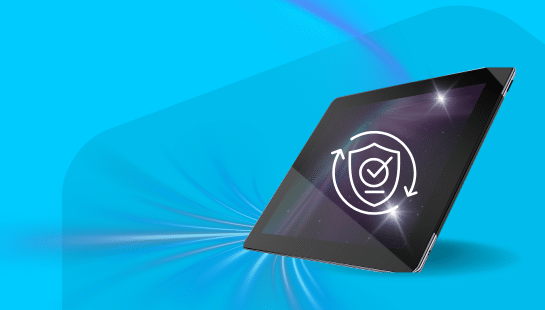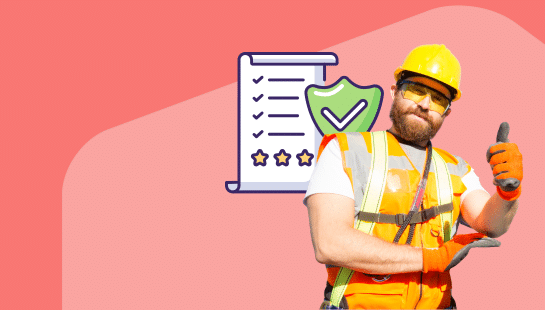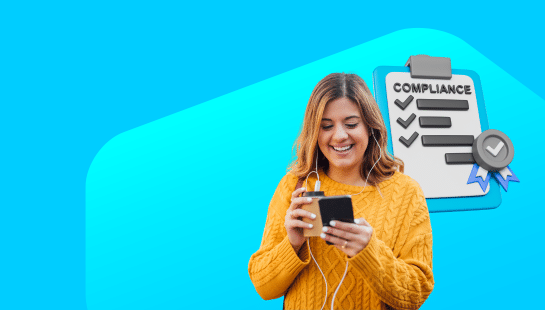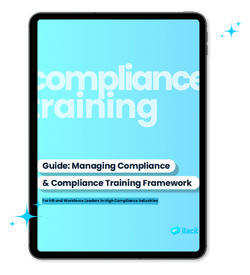AI will revolutionize workplace employment patterns in the coming years. The World Economic Forum predicts machines might replace 85 million jobs by 2025. But they’ll also create 97 million new roles. This change has already begun. The U.S. Bureau of Labor Statistics expects customer service positions to drop by 5% and secretarial roles by 10% before 2032.
AI doesn’t just eliminate jobs – it reshapes how we work. Employees now take on more complex and meaningful roles as AI has simplified processes. The transformation brings important points to think over. AI can improve speed and productivity quickly, but skills might deteriorate if companies don’t implement it correctly. Your workforce’s makeup will change in three ways: through automation, increased capabilities, and adaptation.
Your company’s approach to AI will substantially affect how much employees participate at work. People who say their tech helps them work better are 158% more invested in their jobs than others. This explains the rapid growth in AI-powered skill development and workforce training. The market grows at 31.2% yearly through 2030.
This piece covers what you should know about how AI disrupts workplaces over the next decade. You’ll learn about new roles, ethical concerns, and ways to prepare.
What is the future of AI in the workplace?
AI technology has evolved from experiments to become a fundamental business function. Companies are increasingly adopting AI to help their employees work better, with nearly half already on board. The workplace continues to change faster than ever, as confirmed by 70% of executives.
Understanding the current AI landscape
Today’s AI ecosystem goes well beyond simple automation. Generative AI creates content and engages in human-like conversations, making it the fastest-growing technology platform ever. ChatGPT’s success speaks volumes – it reached one billion monthly visits within four months of launch.
This quick adoption creates tangible results across organizations. Employees showed a remarkable 66% productivity improvement when using generative AI tools, according to a Nielsen study. McKinsey projects AI could add up to $13 trillion to the global economy by 2030.
The actual workplace implementation remains modest despite the excitement. AI-based solutions appear in only 17% of organizations’ HR functions. This gap between potential and reality shows both possibilities and concerns as companies test AI applications while addressing privacy, security, and accuracy issues.
“The industry is being reshaped by the advancement of artificial intelligence,” states one analysis, highlighting workforce changes and capability development. Different sectors feel these changes differently. The most affected fields include:
- Higher-paying professions requiring advanced degrees (STEM, finance, law)
- Middle-skill office and administrative support roles
- Customer service and experience positions
- Banking and insurance operations
- Transportation and logistics functions
How AI is already shaping the future of work
AI affects work in four main ways. It handles routine tasks and frees humans from repetitive work. Workers perform better by letting AI handle certain responsibilities. Tasks get done faster as AI processes time-consuming work more efficiently than humans. Teams now split tasks between humans and AI based on their strengths.
Work has changed from replacement to improvement. One expert explains, “Rather than replacing humans, AI is often complementing and augmenting human capabilities”. Collaborative robots work with manufacturing employees to improve productivity rather than eliminate jobs.
Required job skills continue to evolve. The World Economic Forum expects a 70% change in needed skills by 2030. Technical skills like AI literacy have surged – EU professionals added these skills to their profiles 80 times more in 2023 than in 2022. Human capabilities have become more valuable, especially:
- Creative problem-solving and breakthroughs
- Emotional intelligence and interpersonal communication
- Adaptability and continuous learning
These changes happen quickly. PwC’s 2025 AI Jobs Barometer shows 56% of CEOs report better employee time efficiency from GenAI, while about one-third see increased revenue (32%) and profitability (34%).
Tools like iTacit’s AI HR Assistant help organizations adapt by simplifying HR processes while keeping the essential human element. The difference between “AI jobs” and “human jobs” blends into a partnership where both sides contribute their best abilities as workplaces evolve.
How AI will change the future of work
AI has reshaped the workplace beyond basic task automation. PwC research reveals that AI makes workers more valuable. Wages are rising twice as fast in industries with high AI exposure compared to those with minimal exposure. This economic indicator suggests a complete transformation in how people will work with intelligent systems over the next decade.
From automation to augmentation
AI’s relationship with human work follows two separate paths. The first path focuses on replacing human tasks completely through automation. The second path increases capabilities and creates new opportunities for workers. This difference proves crucial to understanding future workplaces.
Augmentation over replacement has become the preferred strategy. AI systems handle routine tasks so employees can focus on work that needs creativity, problem-solving, and human connection. To cite an instance, AI tools can summarize research, locate data points, or generate templates. This allows people to concentrate on analysis, mentoring, and relationship building.
The numbers tell the story: industries ready to adopt AI have seen revenue growth nearly quadruple since 2022. Workers with AI skills earn substantially higher wages across every analyzed industry. These higher wages show how the market values AI-boosted productivity.
The research shows that 75% of employees would welcome AI at work, if their company remained transparent about implementation. Companies that communicate clearly about AI’s role see faster adoption and better results.
The shift from routine to strategic roles
Roles are changing from routine to strategic work. Jobs with repetitive elements face the biggest changes. Credit authorizers, checkers, and clerks have 81% of their tasks vulnerable to automation. Telemarketers follow at 68% and statistical assistants at 61%.
Bloomberg research shows a different picture for higher positions. While AI could replace more than 50% of tasks for market research analysts and sales representatives, their managers face lower automation rates, just 9% and 21%. This pattern shows that human judgment remains vital higher up the decision-making chain.
In fact, AI creates opportunities for workers to advance from routine to strategic positions:
- Strategic planning and breakthroughs
- Team leadership and people management
- Complex problem-solving and decision-making
- Relationship building and emotional intelligence
In spite of that, this change brings major challenges. The World Economic Forum projects that 40% of employers plan to reduce their workforce where AI can automate tasks. About 30% of current worked hours could be replaced through automation by 2030.
Traditional career entry points continue to evolve. Gen Z job seekers have noticed this change, 49% think AI has reduced their college education’s value in the job market. Organizations now face potential talent pipeline issues that could affect social mobility.
Solutions continue to emerge. Smart companies use AI to train future professionals instead of eliminating entry-level opportunities. iTacit’s AI HR Assistant shows this approach by helping organizations create personalized learning paths that prepare employees for new roles.
Companies find that AI augmentation works better than pure automation. Organizations that utilize generative AI for business and human augmentation achieve 2.5x higher revenue growth and 2.4x more productivity than their competitors. Success comes from strengthening humans with AI-enhanced capabilities rather than replacing them.
The future of workplace roles and skills
AI is reshaping industries and creating a fundamental change in the labor market. Today, more than 10% of workers have job titles that didn’t exist in 2000. This number reaches nearly 20% in the US. These rapid changes require a fresh point of view on how we develop careers and learn new skills.

Emerging roles in AI-driven industries
AI has become deeply woven into business operations, creating several new positions that didn’t exist ten years ago. The World Economic Forum explains that AI-related roles are quickly growing. Big data specialists, fintech engineers, and AI and machine learning specialists are just a few examples. AI engineers now rank as the fastest-growing role in the US, with AI consultants following close behind.
Organizations also just need specialists who can connect AI systems with human teams:
- AI Ethics Officers – Create guidelines to keep AI practices fair and transparent
- AI Translators – Connect technical details with managers’ needs
- Trust Authenticators – Check AI-generated content for accuracy and compliance
- Human-AI Collaboration Managers – Help teams work well with AI systems
The US Bureau of Labor Statistics expects computer and information research jobs to grow 26% between 2023 and 2033. This growth creates a big skills gap, 65% of organizations report major shortages in their technical teams.
Job seekers can find great guidance through iTacit’s AI HR Assistant. It helps spot skill gaps and suggests individual-specific development paths that match new opportunities.
The importance of soft skills and adaptability
Human skills become more valuable as technology takes center stage in the workplace. The World Economic Forum shows that 39% of key job market skills will change by 2030. About 80% of professionals think soft skills matter more than ever in today’s AI-driven workplace.
Communication leads these human capabilities at 34%, while leadership follows at 23% and adaptability at 12%. LinkedIn calls adaptability the “top skill of the moment” as workplaces change rapidly.
“AI can make our jobs easier by automating mundane, time-consuming tasks, but it can’t replace the important interpersonal connections that help make our jobs meaningful,” says Dr. Mark Scullard, senior director of product innovation at Wiley.
Hiring practices reflect this change, over half of hiring managers won’t look at candidates without AI literacy skills. Professionals now add 40% more skills to their profiles compared to 2018.
Tomorrow’s workplace needs both technical AI knowledge and strong human abilities. Workers who excel in both areas can better guide themselves through AI-driven workplaces. They also set themselves up for long-term career growth as technologies change.
Organizations face a key challenge here. Companies that invest in learning programs balancing tech and human skills build stronger teams. These forward-thinking businesses typically see 22% higher revenue growth rates. A smart approach uses tools like iTacit’s AI HR Assistant to find skill gaps and create individual learning paths that prepare employees for changing roles.
AI and the future of employee experience
AI’s most significant effect on the workplace goes beyond boosting output – it transforms employees’ daily work life. Companies that adopt advanced employee experience software can provide their staff with customized system interactions that adapt to their unique needs, learning preferences, and career goals.
Hyper-personalization in HR systems
Employee expectations are changing faster than ever. People now want the same customized experience at work that they get in their personal lives. Companies understand that keeping talented employees means moving beyond generic HR practices.
AI helps create compelling experiences through hyper-personalization by:
- Gathering and analyzing detailed workforce data including skills, performance metrics, and immediate feedback
- Building customized employee experiences that grow with changing needs
- Predicting individual requirements before they arise
Numbers tell the story. Companies using AI-powered personalization see better employee participation, higher satisfaction, and boosted productivity. Well-designed employee programs can help individual workers through flexible arrangements and customized support.
“By understanding an employee’s individual needs, AI goes beyond just recommending the lowest-cost plan, it helps them choose the right plan for their family,” explains one benefits expert. This approach works – one company’s AI-powered benefits enrollment system helped employees save $1,200 annually by selecting optimal health plans.
AI-led mentorship and learning platforms
AI has altered the map of mentorship. AI-powered employee LMS platforms analyze vast data sets to spot patterns between potential mentors and mentees, creating better matches. This results in higher compatibility and a 95% match satisfaction rate in some cases.
Learning experiences now adapt to each person’s needs. High-performing organizations are 19 times more likely to use AI for designing and developing learning experiences. Content comes in various formats, videos for visual learners, audio for busy employees, making education more available.
AI mentorship grows more efficiently than traditional methods. It manages numerous mentor-mentee relationships by automating administrative tasks and showing program performance. Organizations save about 40 hours monthly on program administration.
Organizations using AI-powered mentorship see impressive results:
- 87% higher retention for mentored employees
- 5x greater likelihood of promotion
- 94% satisfaction from program participants
The iTacit AI HR Assistant in action
iTacit’s AI HR Assistant shows how AI changes everyday employee interactions. It works like a 24/7 guide, letting employees ask questions and get quick answers instead of waiting for HR. The system smoothly handles requests for time off, policy questions, or access to company handbooks.
“This is about equipping every employee from the frontline to the C-suite with the information they need, exactly when they need it,” explains Luke Megarity, President and COO of iTacit. The assistant merges with existing systems and pulls information directly from internal documents, policies, and training materials.
Results speak volumes. About 87% of users say the AI Digital Assistant helped them find answers more easily than before. Management teams save roughly 4.5 hours weekly that they previously spent answering employee questions. The system also reveals which topics employees search for most often, helping organizations spot gaps in training and policy clarity.
As workplace AI matures, we’ll see more advanced tools supporting employees throughout their career experience, from customized onboarding to personalized development plans and targeted wellness programs. These tools won’t replace human connection but will magnify it by handling routine questions so HR professionals can focus on complex, valuable interactions.
Workplace design and collaboration in the AI era
AI technology is redefining how and where we work, giving physical workspaces a complete makeover. Smart, fluid environments are replacing office designs that once focused on individual desks and cubicles. Companies now face the challenge of creating spaces that serve employees who use offices differently in hybrid work models.
The decline of desk-bound work
Work patterns show that traditional desk-centric offices no longer make sense. Employees now spend approximately 14.8 hours weekly in meetings, nearly 40% of their work time. American businesses waste about $37 billion each year on unproductive meetings. These inefficiencies and new work habits have pushed companies away from assigned seating.
“With the rise of hybrid work models, companies want to know how their future office spaces will be used,” explains JLL’s Jaymie Gelino. This trend has led to more “touchdown spots” and hot desks that let employees work anywhere in the office.
Numbers tell the story, fixed workstations don’t match modern work styles. Movement patterns tracked by sensors and beacons provide solid proof of which spaces people use and which remain empty. Organizations use this data to transform unused areas into more valuable spaces.

Rise of collaboration spaces and hybrid models
Collaborative environments now take center stage as desk-bound work decreases. Modern offices feature:
- Open nomad tables for spontaneous teamwork
- Lounge areas equipped with digital whiteboards
- Technology-enabled meeting rooms connecting remote and on-site teams
- Casual spaces for informal interactions
Studies reveal that smaller, informal huddle spaces see more use than traditional conference rooms. This change shows the office’s new role, a hub for relationships and company culture rather than individual work.
Smart collaboration tools make these spaces even better. Meeting rooms can identify and assign action items during discussions automatically. Virtual whiteboards powered by AI capture conversations, assign tasks, and translate discussions in real-time so everyone can participate whatever their language.
These innovations solve a key hybrid work challenge: creating fair experiences for all team members. Good technology helps companies avoid situations where remote workers feel less valued than office-based staff.
Data-driven office planning
Organizations now plan workspaces differently thanks to AI. AI analyzes employee movement and interaction data to suggest designs that improve collaboration, productivity, and well-being. Results speak for themselves, one company saw a 200% increase in voluntary office attendance after redesigning based on usage data.
AI systems track important factors like:
- Traffic flows and occupancy patterns
- Employee priorities and work habits
- Collaboration dynamics between teams
- Environmental conditions like lighting and temperature
AI creates detailed simulations of office layouts and predicts how specific choices affect collaboration and satisfaction. This reduces the risk of investing in designs that don’t work.
AI builds workplaces that work better, not just look better. iTacit’s AI HR Assistant helps organizations understand what employees want and optimize their office environments. This leads to happier, more productive teams.
The workplace of tomorrow won’t just use AI for tasks, AI will shape the entire space to bring out the best in people.
Challenges of AI adoption in organizations
Organizations face major hurdles when implementing AI technologies despite their promising benefits. McKinsey research reveals a stark reality – 91% of respondents don’t believe their organizations are “very prepared” to implement and scale AI safely.
Resistance to change and trust issues
Employee resistance blocks AI adoption in many companies. Workers feel threatened – 53% worry that using AI would make them look replaceable. Their fears aren’t baseless. The World Economic Forum shows that 40% of employers expect to reduce their workforce where AI can automate tasks.
Trust levels in AI systems remain low. Only 43% of employees trust commercial and government entities to develop and use AI responsibly. This trust erodes faster when workers see AI failures or inaccuracies in decision-making.
Company culture shapes how well teams accept AI. Poor communication from leadership leads employees to find their own ways around the system. Half of U.S. workers use AI tools without knowing if they’re allowed, while 44% knowingly misuse AI at work.
“If you don’t give people access to AI, they’ll find their way into it anyway, often using it in ways that bypass policies, introduce errors, and blur accountability,” notes Steve Chase, Vice Chair of AI & Digital Innovation.
Skill loss and over-reliance on AI
U.S. workers show a troubling trend – 58% rely on AI to complete work without checking the results properly. This dependency can lead to serious skill erosion, especially for cognitive abilities that need regular practice.
Studies on skill decay point to a clear pattern. Performance drops after periods of disuse, particularly for tasks that need more brain power. Professionals might experience “AI-induced skill decay” without noticing it as AI assistants handle complex cognitive tasks.
Take radiologists using AI assistants. They might feel confident about detecting anomalies, but their ability to tell similar-looking abnormalities apart could weaken. The problem runs deep – 64% of employees admit they put less effort into work because they can lean on AI.
Tools like iTacit’s AI HR Assistant make workflows more efficient, but companies need to balance automation with skill development to avoid too much dependence.
Accountability in AI-assisted decisions
The hardest challenge lies in figuring out who takes responsibility when AI systems make bad decisions. Many AI systems work like a “black box,” making it hard to track accountability.
This is why structured evaluation methods, such as QA black box testing, are increasingly important when validating AI-driven systems. By testing outcomes without relying on internal logic, organizations can better assess reliability, risk, and real-world behavior before AI tools impact critical workflows.
Traditional accountability models don’t work well with AI because:
- Developers can’t predict how their tools will work in different real-life settings
- End users lack technical knowledge to check AI outputs
- Executives might not understand systems well enough to oversee them
Healthcare faces this issue head-on. While 70% of clinicians believe they should be responsible for patient outcomes, they struggle to explain decisions based on complex “black box” models.
The situation gets trickier as AI evolves. Just 54% of U.S. employees say their organizations have policies for responsible AI use. Only 59% believe someone oversees AI use.
Success with AI adoption depends on solving these challenges through clear policies, accountability systems, and developing tools that boost human capabilities rather than replace them. Companies that handle these challenges well will tap into AI’s full potential in tomorrow’s workplace.
Ethical AI and data governance
Organizations are rushing to adopt AI systems while ethical considerations take a back seat to technical implementation. Recent data shows 74% of employees use online monitoring tools, a trend that remote work has accelerated. This reality raises serious questions about balancing productivity with simple privacy rights.
Avoiding surveillance and micromanagement
Poorly implemented AI surveillance creates toxic workplace dynamics. Employees feel anxious and less creative when they know they’re being watched constantly. A recent survey reveals 61% of employers now use AI systems to assess worker performance, yet this strategy often proves counterproductive.
“This isn’t about optimization. This is about surveillance,” notes one workplace expert. Leadership changes from guiding to policing when AI becomes an invisible watchdog. The technology often misinterprets “thinking time” as inactivity and focuses on movement instead of meaningful work.
Organizations must take these steps to prevent problems:
- Inform employees about what data is collected and why
- Use AI to identify trends rather than micromanage
- Let workers control how their data gets used
The iTacit AI HR Assistant shows this balanced approach by supporting employee needs without invasive monitoring. Information remains available while respecting privacy boundaries.
Ensuring fairness in AI recommendations
AI systems reproduce existing biases because of limitations in their training data. IBM explains that “AI systems may produce biased results that reflect and perpetuate human biases within a society”. Legal risks become substantial, especially in hiring and HR contexts.
Fairness is a vital part of AI debates because discrimination can affect vulnerable groups disproportionately. AI can unintentionally reinforce discrimination or make decisions that lack transparency without ethical oversight.
Transparency in data use and decision-making
Better understanding of outcomes and decision-making processes comes from transparency that opens the AI “black box”. Stakeholders need to see how models operate, understand algorithm logic, and know how models get reviewed for accuracy and fairness to trust AI decisions.
The EU AI Act stands as the world’s first complete AI regulatory framework and implements strict governance and transparency requirements. AI systems that interact with people must tell users about AI interaction (unless obvious), and content-generating AI must mark outputs as AI-generated.
Trust grows when organizations document their AI systems well, including model purpose, data sources, evaluation methods, and known limitations. This approach transforms workplace AI into a tool that truly supports rather than just watches over employees.
Preparing for the future of work with AI
Organizations must prepare proactively to succeed in the AI era. Companies that plan systematically will thrive instead of just reacting to change.
Building a culture of continuous learning
A workplace environment focused on constant skill development has become essential. Research reveals that all employees except one want more formal training and see it as the best path to boost AI adoption. Technical skills now become obsolete in less than five years, which makes this particularly important.
The most effective companies run regular AI sessions where team members can try new tools without judgment. They also put resources into training programs that combine technical AI knowledge with human strengths like creativity, teamwork, and critical thinking.
Redesigning roles and workflows
Progressive organizations ask “How could AI improve this role?” instead of “Which tasks can AI replace?”. This approach requires a complete task review to identify:
- Repetitive, data-heavy processes ready for automation
- Functions that need empathy and complex decision-making where humans excel
A mid-size insurance company analyzed their customer interactions and discovered 60% were policy-related FAQs. Their chatbot implementation allowed human agents to concentrate on claims and customer retention.
Investing in ethical and inclusive AI systems
Responsible AI drives both ethical and financial success. Companies taking a complete, responsible approach to AI earn double the profit from their AI initiatives. Success depends on clear governance frameworks, bias audits, and internal AI ethics committees.
The iTacit AI HR Assistant shows this balanced strategy by helping employee growth while upholding ethical standards.

Conclusion
AI has already started revolutionizing workplaces. The next decade will bring a major change from replacing jobs to boosting them as companies find that humans and AI working together get better results than automation alone. Jobs won’t vanish – they’ll evolve. Machines will handle routine work while people take on more strategic roles.
You’ll need to update your skills. Technical knowledge of AI is crucial now, but human skills like solving complex problems and understanding emotions will become more valuable as technology grows. Learning constantly isn’t just helpful – it’s crucial to stay employed.
Workplaces will look very different soon. Smart office designs will focus on teamwork rather than solo work. Data-driven layouts will make teams more productive and support both remote and office workers through intelligent meeting spaces and online collaboration tools.
Major challenges still exist. Workers worry about job security and losing their skills, which makes sense. Companies that rely too much on AI without proper assessment risk their workers’ abilities getting rusty. On top of that, unclear rules about who’s responsible create problems when AI makes mistakes.
Ethics matter just as much. AI monitoring can become too intrusive, and biased systems might discriminate unfairly. Smart organizations will be open about how they use data and set up ethics teams to tackle these problems early.
Companies that see AI as a partner rather than a replacement will succeed most. They’ll reshape jobs to get the best from both humans and AI, build a culture of ongoing learning, and create rules that keep everyone’s trust. Then they’ll achieve what PwC research shows – industries that embrace AI have seen revenue grow almost four times since 2022.
Tools like iTacit’s AI HR Assistant represent this balanced approach. It helps employees grow while respecting ethical limits. The assistant helps create tailored learning paths that prepare workers for changing roles without losing the human touch that matters most.
AI’s effect on work depends on how you use it. Change can feel huge, but a careful approach that balances new technology with human values will create workplaces where people and AI succeed together.









